The challenge
As digitalization progresses, it is becoming increasingly important not only to digitalize port facilities and machinery, but also to include the people involved in the entire port ecosystem in this process. This is because the business processes of ports are also developing rapidly on the way to e-business, i.e. paperless digital processes and e-commerce, especially in the e-ordering and e-payment areas. Our customer in the Ukraine also faced this challenge. The existing Terminal Operation System (TOS) was primarily aimed at operationally managing the movement and storage of various types of cargo in and around the port, but did not cover all the necessary business processes, nor were the processes transparent and traceable for the entire user community, such as freight forwarders, customs clearance, logisticians, etc.. However, both of these points are crucial for terminal operations. All these problems have created the need to provide the port community with a user-friendly, modern system. It covers all existing business processes as well as the exchange of information and documentation between the terminal, customers and all other stakeholders digitally and provides all users with reliable, transparent and free access. Our customer's aim was therefore to introduce a Terminal Communication System (TCS) which, in combination with the existing Terminal Operation System, would cover the missing necessary process-related part, act as a terminal webshop for customers and also provide all relevant information for the port community transparently and in real time. This new system was also intended to implement a further goal, the conversion from paper-based document processes to digitalized processes.
The solution
The customer decided to use the compacer edbic platform as a B2B integration platform. This made it possible in the first step to integrate all existing heterogeneous and autonomous application systems such as ERP, TOS and other administrative systems in the port system landscape onto one platform in a process-oriented manner. In the second step, the new Terminal Communication System (TCS) was then integrated onto the edbic platform. This newly created e-business integration platform now acts as a central "data hub" for our customer, its applications and the entire port community. It ensures the exchange of data between all integrated systems and has become the core of all operational and logistical flows. The Business Integration Cluster edbic creates traceable automated business processes with improved data quality through central monitoring and reporting, checking logics and a wide range of warning and alarm functionalities. All of this helps to improve data quality and transparency within processes and communication with shipping companies, customs authorities, freight forwarders and other partners of our customers and ultimately also to save costs.
Result
Networking the new Terminal Communication System as a client web portal with the existing Terminal Operation System now gives users access to detailed data in real time, makes all processes relating to the terminal transparent and thus also creates closer cooperation between the port operator and its customers. Inquiries to the service hotline have been reduced by 80% and are now a thing of the past. Data integrity is ensured, among other things, by approving changes at field level. This means that our customer can always see who has changed what data and who is allowed to change what. - By connecting the administrative systems, so-called port authority systems, to the edbic integration platform, a self-service for the authorization of truck loading and unloading on the port premises was implemented. The now digital process handling for container unloading and loading on third-party trucks using a barcode entry pass is simpler, faster and much more customer-friendly. - The integration of the Telegram Messenger was not a technical challenge, but had an even greater impact. Thanks to this messenger service, it is now possible for all port employees and those involved in the ecosystem to access the system's data and view relevant information anywhere and at any time, even without a laptop. In this project, the excellent cooperation with the customer and the rapid implementation should also be emphasized. Why did it go so well? Right from the start, our customer and we as compacer focused on close cooperation and regular customer feedback. The use of modern software development frameworks and our agile approach also contributed enormously to speeding up the project. We are still in close contact and receive valuable input and requests from the customer, which helps us enormously in the internal development of edbic.
/Ukrainischer%20Hafen/Odessa-Hafen-Referenz.jpg)
/Ukrainischer%20Hafen/pngtree-ukraine-flag-transparent-watercolor-stroke-brush-png-image_3954405-removebg-preview.png)
/Ukrainischer%20Hafen/Odessa-Hafen-Referenz.jpg)
/Ukrainischer%20Hafen/pngtree-ukraine-flag-transparent-watercolor-stroke-brush-png-image_3954405-removebg-preview.png)
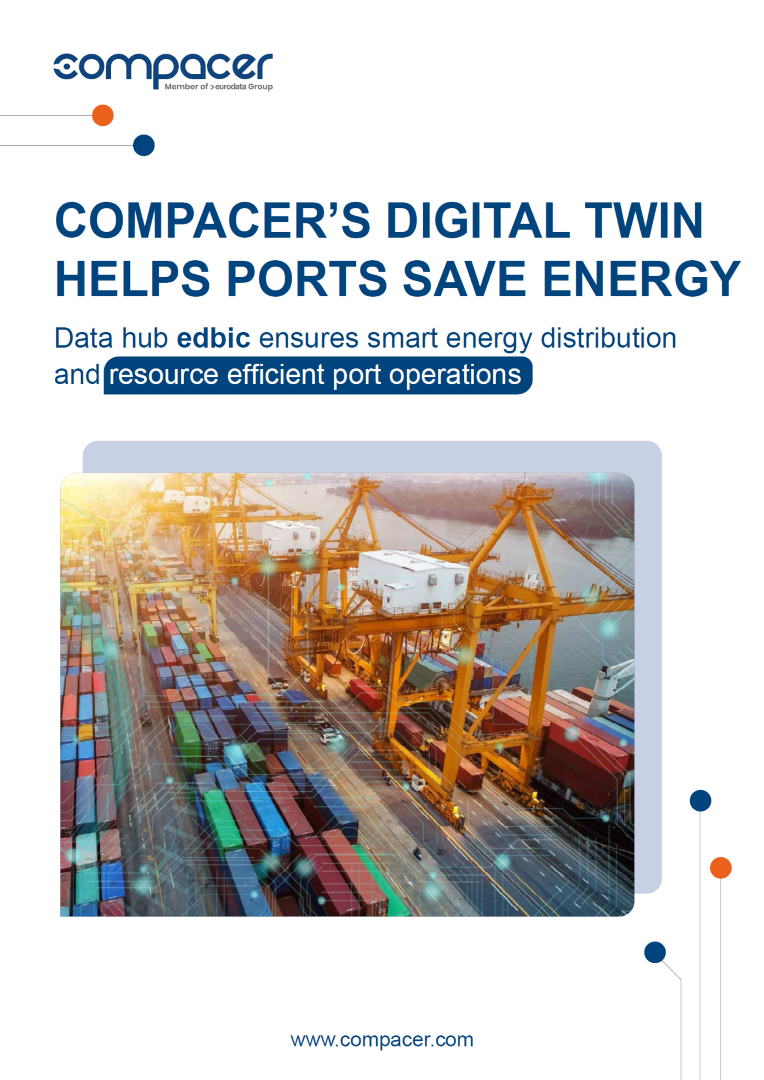 Brochure
Brochure
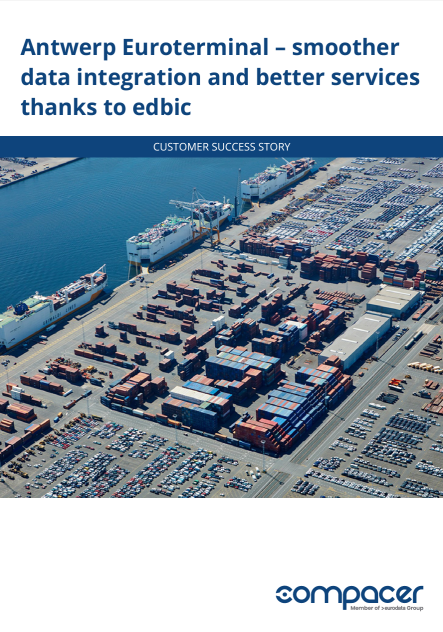 White Paper
White Paper
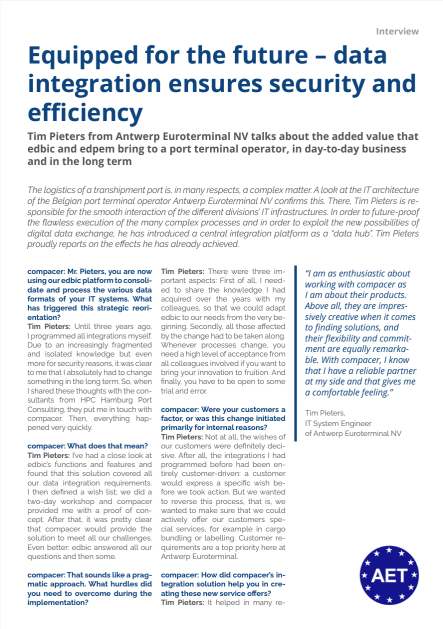 Interview
Interview
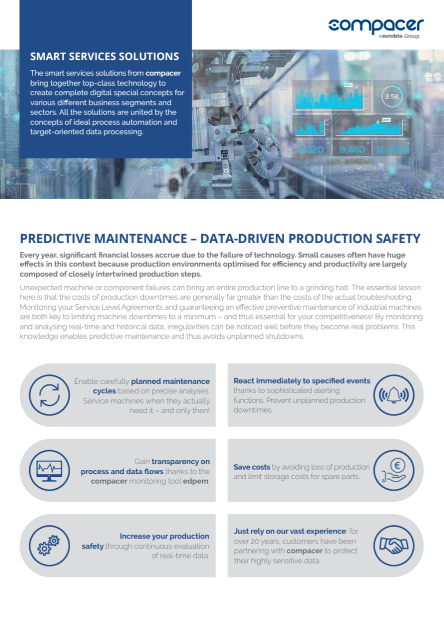 Whitepaper
Whitepaper
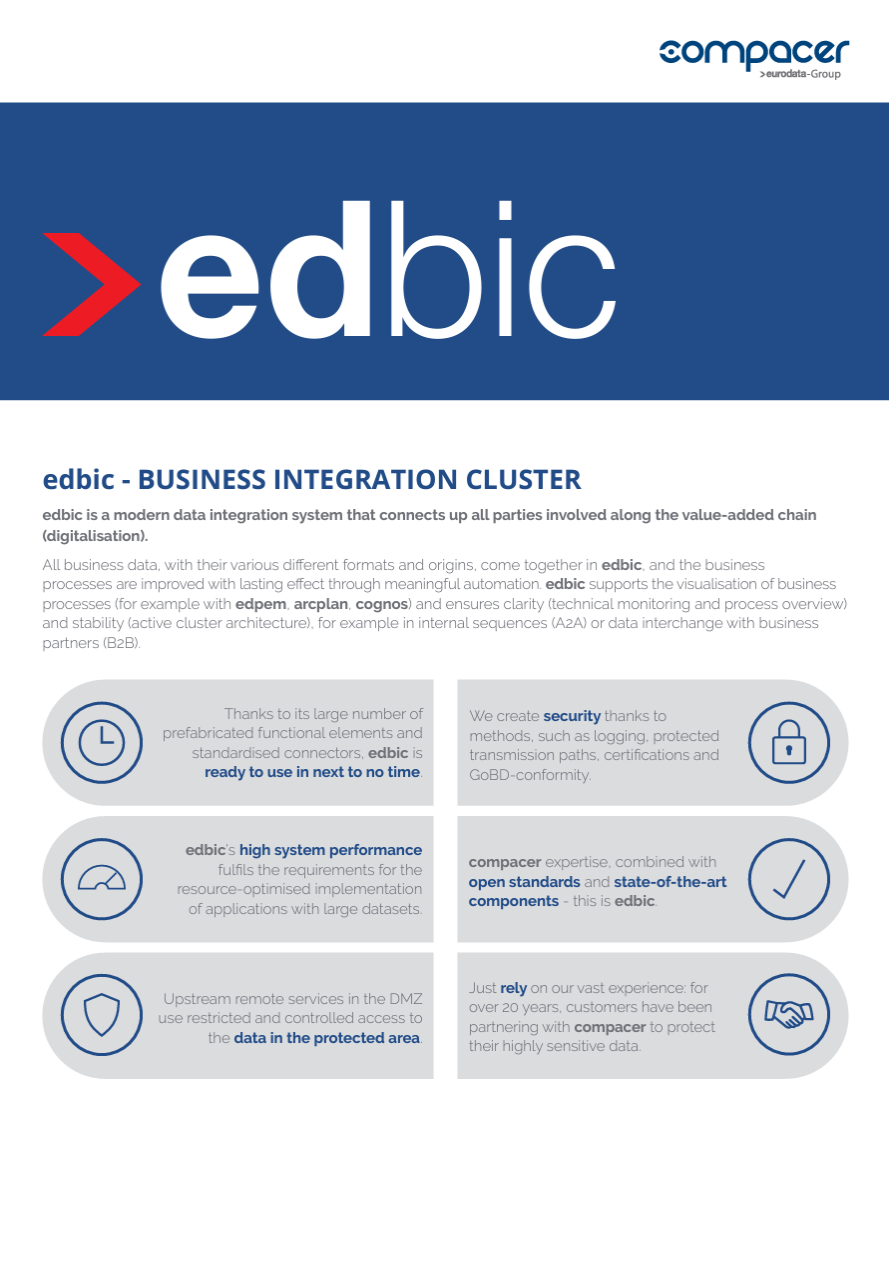 Data Sheet
Data Sheet
